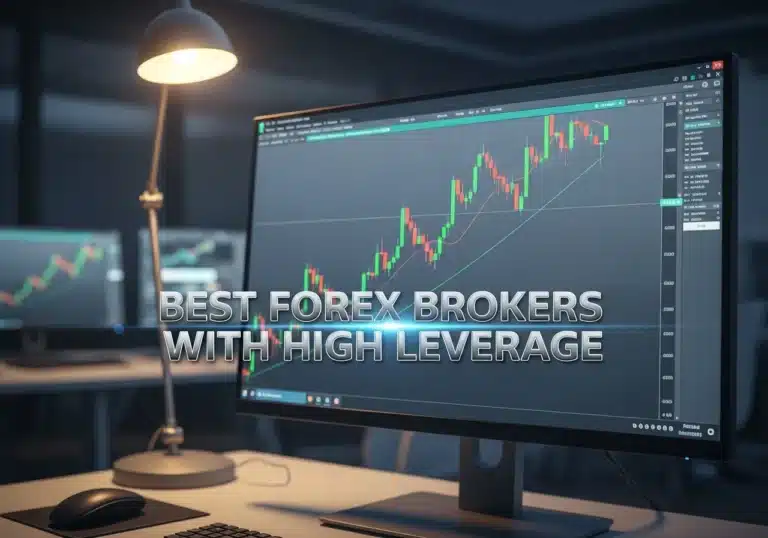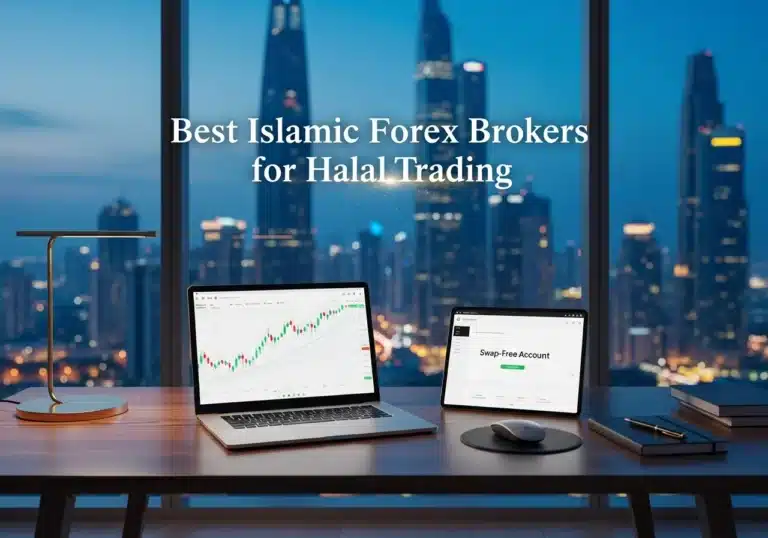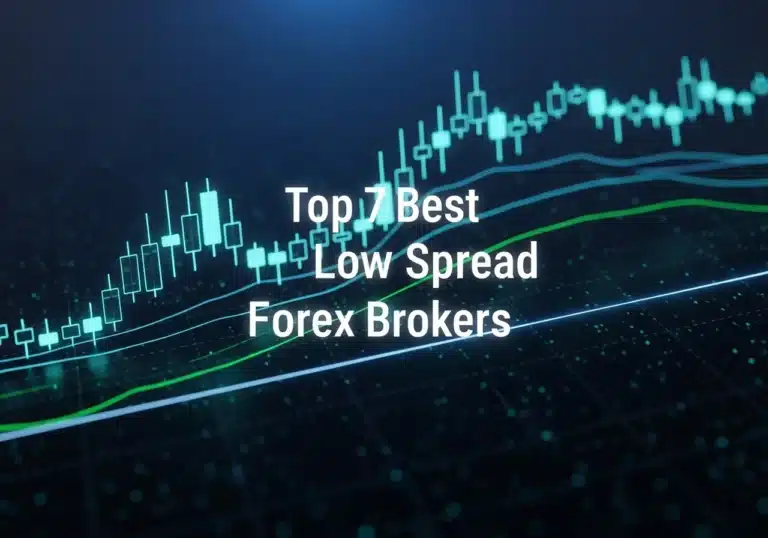Leverage in forex is essentially a loan provided by your forex broker, allowing you to control a much larger position in the currency market than your initial capital would otherwise permit. It’s a powerful tool that can significantly amplify your potential profits from small price movements. However, this amplification works both ways, meaning it can also magnify your losses. This guide will unpack everything you need to know about using leverage in forex trading. We’ll explore how it works, how to use it strategically, the significant risks involved, and how to manage them effectively to navigate the markets with greater confidence.
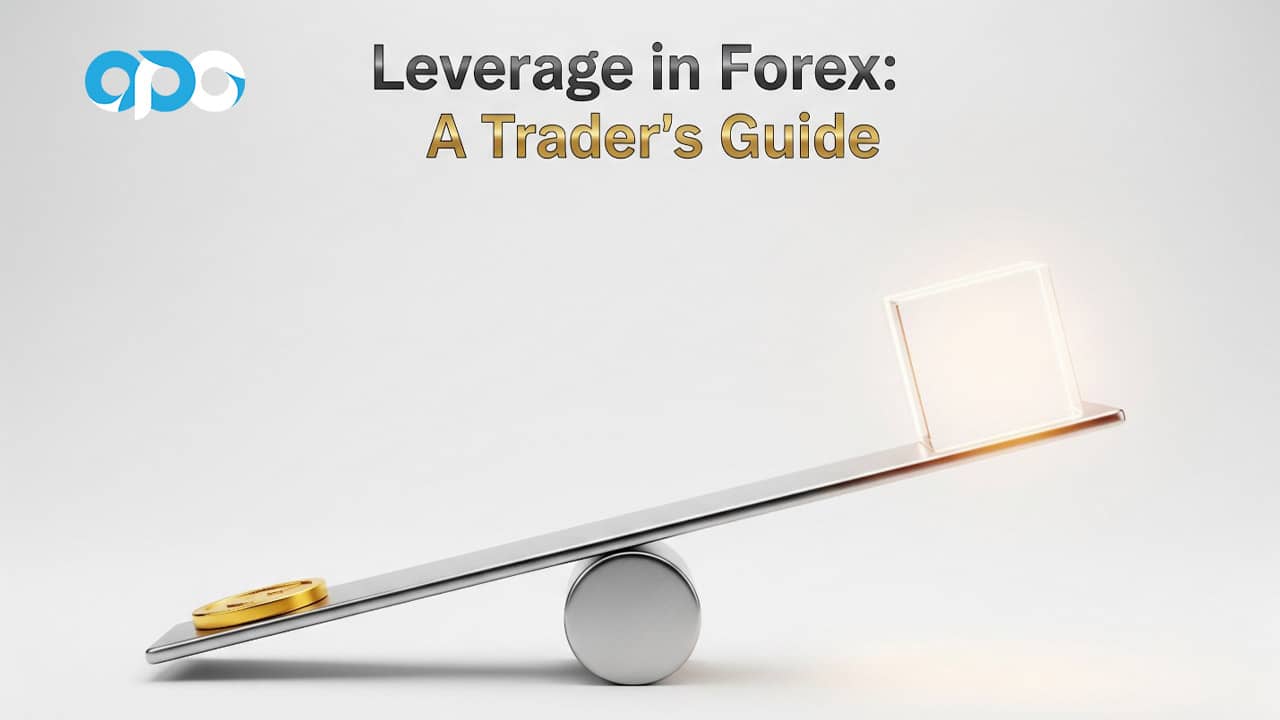
Key Takeaways
- Leverage is Borrowed Capital: It allows traders to open positions much larger than their own deposited funds.
- A Double-Edged Sword: Leverage magnifies both potential profits and potential losses equally. What might seem like a small market move can have a huge impact on your account balance.
- Margin is Key: Margin is the collateral required to open and maintain a leveraged position. It is not a fee but a portion of your account equity set aside.
- Risk Management is Non-Negotiable: Using tools like stop-loss orders and adhering to strategies like the 1% rule are critical to protect your capital when using leverage in forex.
- High Leverage Isn’t Always Better: While tempting, using the maximum available leverage is one of the quickest ways for new traders to deplete their accounts. Choosing the right level is a personal decision based on risk tolerance and strategy.
What is Leverage in Forex Trading?
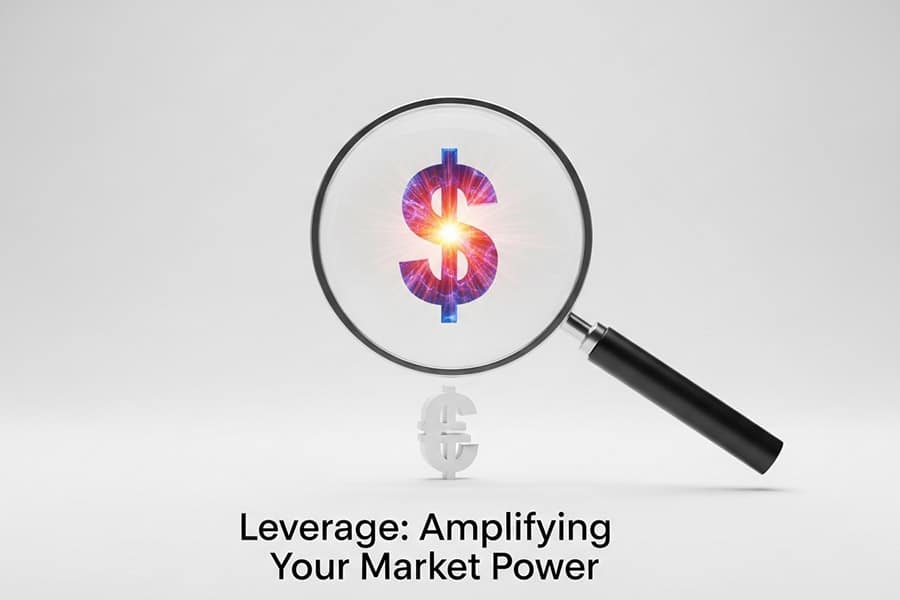
At its core, leverage in forex trading is a mechanism that lets you command a large amount of money using a very small amount of your own. Think of it as a financial tool offered by brokers to give their clients more purchasing power in the market. Without it, trading currencies would be inaccessible for most individuals, as the smallest standard price fluctuations, known as ‘pips,’ would result in minuscule profits or losses on a small capital base. Leverage solves this by giving you a bigger seat at the table.
Defining Leverage: The Concept of Borrowed Capital
In simple terms, leverage is the use of borrowed funds to increase one’s trading position beyond what would be available from their cash balance alone. When you use leverage in forex, your broker is essentially lending you money to open a larger trade. For example, with a leverage ratio of 1:100, for every $1 you put up, you can control $100 in the market. This borrowed capital allows you to take advantage of relatively small price movements in currency pairs, which could otherwise take a long time to yield significant returns. It’s the engine that makes the fast-paced world of retail forex trading possible.
How Leverage Works: A Simple Analogy
Imagine you want to buy a house worth $500,000. You likely don’t have that entire amount in cash, so you go to a bank for a mortgage. You put down a 10% deposit of $50,000, and the bank lends you the remaining $450,000. You now control a $500,000 asset with just $50,000 of your own money. In this analogy, your leverage is 1:10. If the house value increases by 10% to $550,000, your initial $50,000 investment has effectively doubled to $100,000 in equity. Leverage in forex works on the same principle, but on a much shorter timescale and often with much higher ratios.
Leverage as a Double-Edged Sword
This is the part that every trader, new or experienced, needs to respect deeply. The power of leverage is symmetrical. Just as it can amplify your gains, it can amplify your losses with the same intensity. Using the house analogy, if the property’s value dropped by 10% to $450,000, your entire $50,000 deposit would be wiped out. In forex, where markets can move in seconds, a highly leveraged trade can go against you just as quickly as it can go in your favor. This is why a thorough understanding of leverage in forex is not just beneficial—it’s essential for survival.
Read More: difference between margin and leverage in Forex
How to Use Leverage in Forex Trading
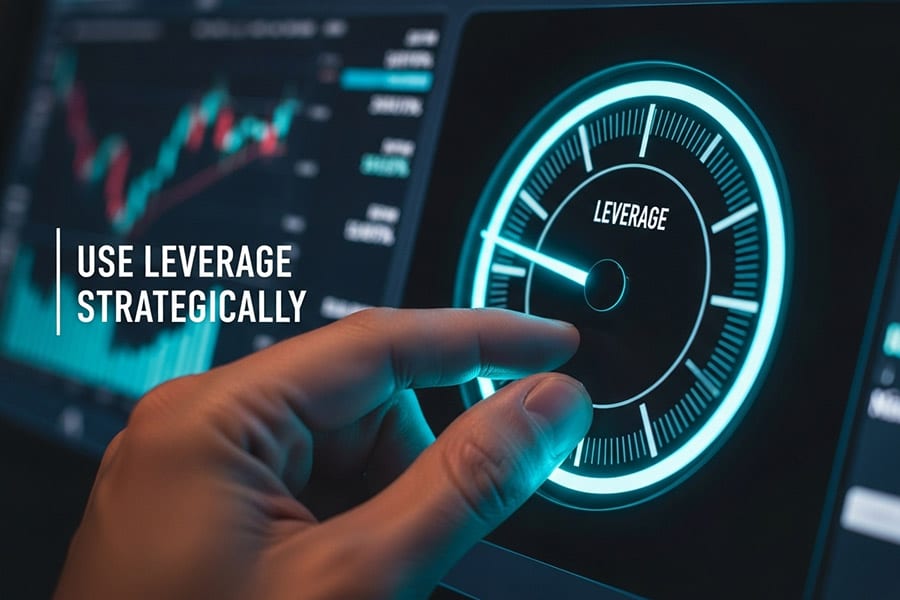
Effectively using leverage is less about chasing massive profits and more about strategic position sizing and rigorous risk management. It begins with understanding the fundamental relationship between leverage and margin, and then making calculated decisions on how much risk you are willing to take on each trade. It’s a delicate balance that requires both knowledge and discipline.
The Role of Margin in Leveraged Trading
Margin is a cornerstone of leveraged trading; without it, you can’t access leverage. It’s often misunderstood as a fee or a cost of trading, but it’s not. Margin is a good-faith deposit, or collateral, that you need to put up to open and maintain a leveraged position. It’s your skin in the game. Your broker holds this margin for the duration of your trade. Once the trade is closed, the margin is released back into your account balance, adjusted for any profit or loss.
What is Margin and How is it Calculated?
The amount of margin required is typically expressed as a percentage of the full position size. For instance, if you are required to have a 2% margin, this corresponds to a leverage ratio of 1:50. The formula is simple: Margin Requirement = (1 / Leverage Ratio) * 100%.
So, for a 1:100 leverage ratio, the margin requirement is (1 / 100) * 100% = 1%.
To calculate the actual margin in currency terms for a specific trade, you use this formula:
Margin = (Position Size in Units * Current Market Price) / Leverage Ratio
For example, if you want to trade one mini lot (10,000 units) of EUR/USD at a price of 1.0800 with 1:100 leverage, the margin required would be (10,000 * 1.0800) / 100 = $108.
Margin vs. Leverage: Understanding the Difference
While closely related, margin and leverage are two sides of the same coin.
- Leverage is the tool that allows you to control a large position with a small amount of capital (e.g., 1:100, 1:500). It’s the potential for amplification.
- Margin is the actual amount of your own money required to open that position. It’s the collateral needed to access the leverage.
In essence, the higher your chosen leverage, the lower the margin requirement for a given trade size, and vice versa.
Choosing the Right Leverage Ratio
This is one of the most critical decisions a trader will make. Brokers often advertise very high leverage as a key benefit, but the highest option is rarely the wisest choice, especially for beginners. The right leverage in forex for you depends on your trading strategy, risk tolerance, and experience level.
Common Leverage Ratios Offered by Brokers
Brokers offer a wide spectrum of leverage ratios, which can vary significantly based on the regulatory environment they operate in. Common ratios include:
- Low Leverage: 1:10, 1:30, 1:50
- Medium Leverage: 1:100, 1:200
- High Leverage: 1:500, 1:1000, or even higher in some regions.
Major regulatory bodies like ASIC in Australia or ESMA in Europe have capped the leverage available to retail traders (e.g., 1:30 for major currency pairs) to protect them from excessive risk.
Factors to Consider When Selecting Your Leverage
When choosing your leverage level, you should ask yourself:
- What is my risk tolerance? Can you stomach the potential for rapid, significant losses? A more conservative trader should opt for lower leverage.
- What is my trading strategy? A scalper who aims for very small, frequent profits might feel they need higher leverage to make the trades worthwhile. A long-term position trader might prefer lower leverage to weather market volatility without facing a margin call.
- How volatile is the asset I’m trading? More volatile pairs like GBP/JPY might warrant lower leverage than more stable pairs like EUR/USD.
From my own journey, I learned early on that starting with lower leverage (like 1:50 or 1:100) forces you to focus on making good trading decisions rather than just getting lucky on an over-leveraged bet.
How Your Broker and Regulations Affect Available Leverage
The leverage you can access is not entirely your choice. It’s heavily influenced by your broker and the financial regulations they are governed by. For example, a broker regulated in a jurisdiction with strict leverage caps simply cannot offer you 1:500 leverage on forex majors. This is a protective measure, and it’s a key reason why trading with a well-regulated broker is so important. They have rules in place designed to shield you from the kind of catastrophic losses that extreme leverage in forex can cause.
Calculating Your Position Size with Leverage
Understanding how to calculate your position size is fundamental. This is where you connect your trading plan, risk management rules, and leverage into a concrete action. It’s about determining how many lots you can trade based on your account size and the risk you’re willing to take.
A Practical Example: Trading EUR/USD with Leverage
Let’s walk through a realistic scenario:
- Account Balance: $2,000
- Chosen Leverage: 1:100
- Currency Pair: EUR/USD
- Current Price: 1.0800
- Trade Idea: Go long (buy)
- Risk Rule: Risk no more than 1% of the account on a single trade.
- Calculate Your Risk Amount: 1% of $2,000 is $20. This is the maximum you are willing to lose on this trade.
- Determine Your Stop-Loss: You analyze the chart and decide to place your stop-loss 20 pips below your entry price.
- Calculate Pip Value: For EUR/USD, with a standard lot (100,000 units), one pip is worth $10. For a mini lot (10,000 units), it’s $1. For a micro lot (1,000 units), it’s $0.10.
- Determine Position Size: Since you’re risking 20 pips and your max loss is $20, each pip’s movement against you must be worth $1 ($20 / 20 pips). This means you should trade one mini lot (10,000 units).
- Calculate Required Margin: To open a one mini lot position (10,000 EUR) at a price of 1.0800 with 1:100 leverage, the margin needed is (10,000 * 1.0800) / 100 = $108.
Since your account has $2,000, you have more than enough to cover the $108 margin. Notice how the leverage didn’t dictate the position size; the risk management rule did. The leverage in forex simply ensured you had enough margin to open the trade.
Understanding Lots: Standard, Mini, and Micro
- Standard Lot: 100,000 units of the base currency. Best suited for large, institutional accounts.
- Mini Lot: 10,000 units. A popular choice for intermediate traders.
- Micro Lot: 1,000 units. Ideal for beginners or those testing strategies with minimal capital.
Using micro lots is a fantastic way to practice using leverage in forex with real money but significantly reduced risk.
Read More: Margin in Forex: A Comprehensive Guide
The Advantages of Using Leverage in Forex
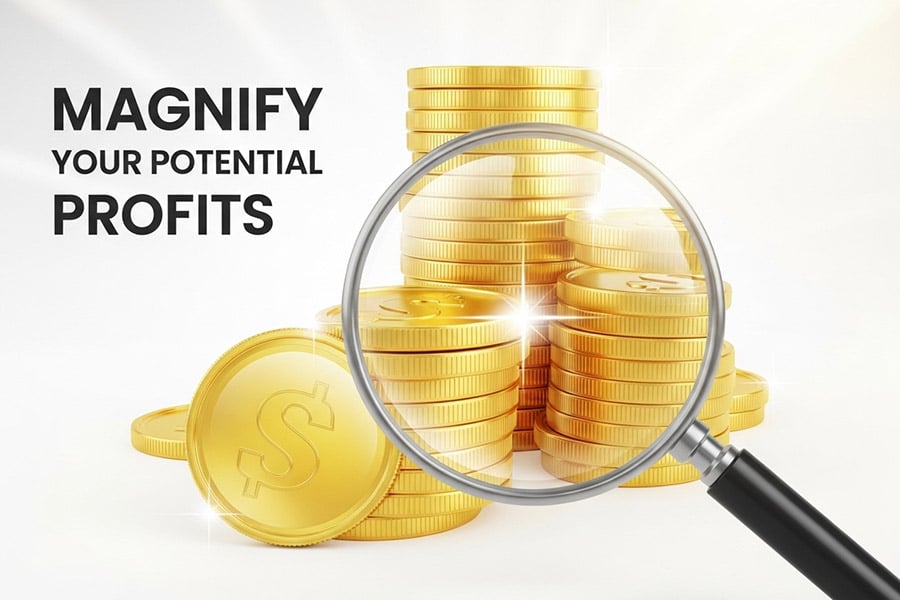
While the risks are substantial, leverage isn’t offered without reason. When used judiciously, it provides several distinct advantages that make the forex market accessible and dynamic for retail traders. It’s the tool that levels the playing field, allowing smaller participants to engage meaningfully in a market dominated by large financial institutions.
- Increased Market Exposure with Lower Capital
This is the primary benefit. Leverage allows a trader with a modest account, say $1,000, to control a position worth $100,000 (with 1:100 leverage). Without it, they would be limited to trading only $1,000, where even a significant 1% move in the market would only yield a $10 profit. With leverage, that same 1% move could potentially yield a $1,000 profit, making trading worthwhile.
- Magnified Potential for Higher Returns
Following directly from the first point, the ability to control larger positions means that even small, fractional price movements (pips) can translate into substantial gains relative to the capital invested. This potential for magnified returns is what attracts many to the forex market. A successful strategy combined with prudent leverage in forex can lead to quicker account growth compared to non-leveraged investments.
- Opportunity to Trade in Larger Markets
Leverage opens doors to markets that would otherwise be out of reach. It allows traders to take meaningful positions in major currency pairs, commodities, and indices. This provides a wealth of opportunities that wouldn’t be accessible if traders had to provide the full face value for every position they opened.
- Enhanced Trading Flexibility and Diversification
Because leverage reduces the margin required for each trade, it frees up your capital. Instead of tying up your entire account in one or two small positions, you can allocate your margin across several different trades. This allows for diversification across various currency pairs or assets, which can be a powerful risk management technique in itself. You can hold multiple positions simultaneously without needing a massive capital outlay.
The Significant Risks of Forex Leverage

It is impossible to overstate the risks associated with leverage in forex. Acknowledging and preparing for these risks is what separates consistently profitable traders from those who quickly burn through their capital. The same mechanism that enhances your buying power also amplifies your vulnerability to market volatility.
The Primary Risk: Magnified Losses
This is the dark side of leverage’s double-edged nature. While the prospect of doubling your account on a single trade is alluring, the reality is that you can also lose your capital just as quickly. A small adverse market movement can trigger devastating losses that far exceed what you would have experienced in a non-leveraged trade.
How a Small Market Movement Can Lead to a Large Loss
Let’s revisit our trader with a $2,000 account using 1:100 leverage to control a $100,000 position. A mere 2% move against their position would result in a $2,000 loss (2% of $100,000), completely wiping out their entire account equity. Without leverage, that same 2% move on their $2,000 would have resulted in a manageable loss of just $40. This stark difference highlights the immense danger of using high leverage in forex without a solid risk plan.
Understanding Margin Calls and Liquidation
These are two of the most feared terms in a leveraged trader’s vocabulary. They represent the broker’s automated risk management system kicking in to protect both you and them from escalating losses.
What is a Margin Call?
A margin call occurs when your floating losses on open positions grow so large that your account equity (your balance plus or minus unrealized profits/losses) falls below a certain required level, known as the margin level. It’s an alert from your broker telling you that you are close to having your positions automatically closed. You will need to either deposit more funds to increase your equity or close some positions to reduce your margin requirement.
How to Avoid Having Your Positions Forcefully Closed
The step after a margin call, if the market continues to move against you, is liquidation. This is when the broker’s system automatically starts closing your positions (usually starting with the least profitable one) to free up margin and prevent your account from going into a negative balance. The best way to avoid this is to never get close to a margin call in the first place. This involves proactive risk management.
Key Risk Management Strategies for Leveraged Trading

Professional traders survive and thrive not by using the highest leverage, but by mastering risk management. These strategies are your lifeline when trading with leverage in forex.
- The Importance of Setting a Stop-Loss
A stop-loss order is a pre-determined instruction to your broker to close a trade at a specific price point if the market moves against you. It is your ultimate safety net. It defines your maximum acceptable loss on a trade before you even enter it. Trading without a stop-loss, especially with leverage, is like driving a race car without brakes.
- Using Take-Profit Orders to Secure Gains
Just as a stop-loss protects you from excessive losses, a take-profit order automatically closes your trade when it reaches a certain level of profit. This helps you lock in gains and removes the emotion of greed from the decision-making process. Having a clear exit plan for both winning and losing scenarios is crucial.
- The 1% Rule: A Guideline for Risk Per Trade
A widely respected guideline in trading is to never risk more than 1% (or 2% for those with a higher risk tolerance) of your trading capital on a single trade. This means that if you have a $5,000 account, you should not allow yourself to lose more than $50 on any one trade. This rule forces disciplined position sizing and ensures that a string of losses will not wipe out your account.
- Avoiding Over-Leveraging Your Account
Just because your broker offers 1:500 leverage doesn’t mean you should use it. Using excessive leverage in forex is a rookie mistake. It reduces the distance the market needs to move against you before you get a margin call. A more prudent approach is to select a moderate leverage level and, more importantly, to use effective leverage that is far lower than your maximum available. Effective leverage is the ratio of your total position size to your account equity. Professionals aim to keep this number very low.
Read More: Overleveraged trading
Is High Leverage in Forex a Good Idea?

This is a question every trader grapples with. The allure of high leverage is strong, promising quick and substantial profits. However, the professional consensus is clear: while it can be a powerful tool, excessively high leverage is more often a path to ruin than to riches.
The Dangers of Using Maximum Leverage
Using the maximum leverage offered by a broker (e.g., 1:500 or 1:1000) is one of the most dangerous things a new trader can do. It drastically reduces the margin for error. A tiny move in the wrong direction can trigger a margin call and liquidate your account in minutes. It encourages a gambling mindset rather than a strategic approach to trading. In my experience, traders who focus on the maximum leverage they can get are often the same ones who don’t last long in the market. They are fixated on the potential reward without giving nearly enough respect to the certainty of the risk.
A Professional Perspective on Optimal Leverage
Most professional traders don’t use high leverage. They may have an account with high leverage available, but their effective leverage on any given trade is remarkably low. They rely on their strategy, analysis, and disciplined risk management, not on the hope of a lucky, over-leveraged trade. A professional’s goal is capital preservation first, and profit generation second. An “optimal” level of leverage in forex is therefore not a fixed number but rather the lowest level necessary to execute your trading strategy effectively while staying well within your risk management rules. For many, this might mean an effective leverage of 1:10 or 1:20, even if their account has 1:100 available.
Developing a Personal Leverage Strategy
The best approach is to develop a personal strategy tailored to your own circumstances. Start with the lowest leverage possible, perhaps on a demo account. Understand how it impacts your trades and margin. As you become more experienced and consistently profitable, you can consider if a modest increase in leverage aligns with your strategy. Your leverage choice should be a conscious, strategic decision, not a default setting. Always let your risk management rules, not the allure of high returns, be the primary driver of your use of leverage in forex.
Opofinance Services
For traders seeking a secure and feature-rich environment to apply their knowledge of leverage in forex, Opofinance presents a compelling choice. As an ASIC-regulated broker, it provides a foundation of trust and safety, which is paramount when dealing with leveraged products.
Opofinance enhances the trading experience with a suite of powerful tools and flexible options:
- Advanced Trading Platforms: Choose from the industry-leading MetaTrader 4 (MT4) and MetaTrader 5 (MT5) platforms, the sophisticated cTrader, or the user-friendly proprietary OpoTrade app. This variety ensures that every trader can find a platform that suits their style.
- Innovative AI Tools: Gain a competitive edge with cutting-edge artificial intelligence. Utilize the AI Market Analyzer for deep insights, the AI Coach to refine your strategy, and AI Support for instant assistance.
- Social & Prop Trading: Engage with a community of traders through social trading features or take on the challenge of proprietary trading to manage larger capital pools.
- Secure & Flexible Transactions: Experience peace of mind with safe and convenient deposit and withdrawal methods. Opofinance supports a range of options, including crypto payments, and prides itself on charging zero fees for these transactions, ensuring more of your money stays in your account.
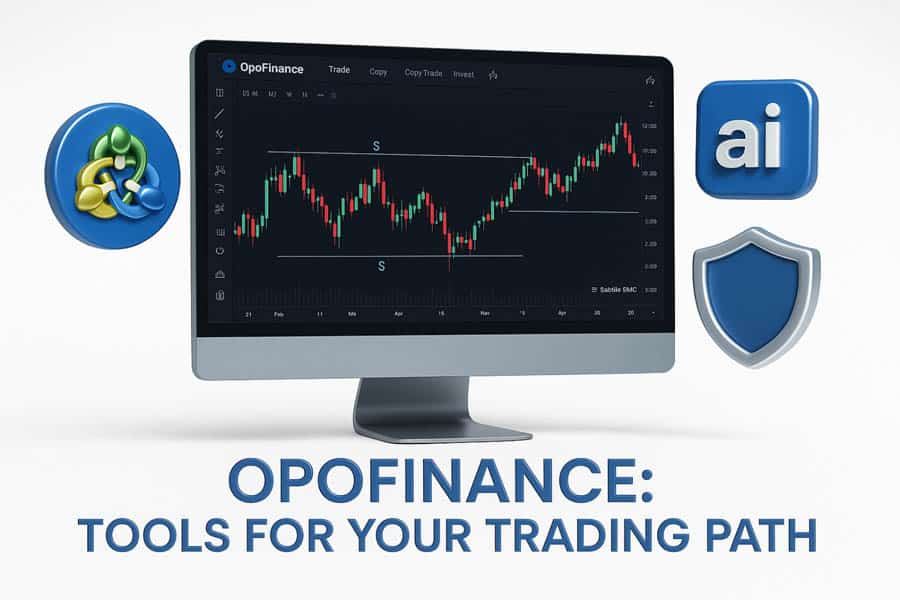
Ready to trade with a broker that combines security with innovation? Explore the comprehensive services at Opofinance and open an account to experience a superior trading environment.
Conclusion
Leverage in forex is an undeniably powerful feature of the modern trading landscape. It offers the incredible opportunity to achieve significant market exposure and amplify profits with a relatively small amount of capital. However, this power must be handled with the utmost respect and caution. It is a double-edged sword that magnifies losses just as readily as it does gains. The key to long-term success is not to seek out the highest leverage possible, but to master the principles of risk management. By using stop-loss orders, proper position sizing, and maintaining discipline, you can harness the benefits of leverage while protecting yourself from its considerable dangers. Ultimately, successful leveraged trading is a testament to strategy, not a gamble on high stakes.
Can you trade forex without leverage?
Yes, you can trade forex without leverage, which is known as trading on a 1:1 basis. However, this would require you to put up the full value of the trade. For example, to trade a standard lot of EUR/USD ($100,000), you would need $100,000 in your account. This makes it impractical for most retail traders.
What is the best leverage for a beginner?
For a beginner, it is highly recommended to start with low leverage, such as 1:10 or 1:30, or even use a demo account with various settings. This helps in understanding market dynamics and the impact of leverage without exposing the account to substantial risk.
How much leverage is too much?
Any amount of leverage that makes you feel anxious or causes you to risk more than your pre-defined limit (e.g., 1-2% of your account) per trade is too much. Leverage becomes excessive when a small, normal market fluctuation has the potential to cause a margin call or a catastrophic loss to your account.
Does leverage affect spread or commissions?
How do I change the leverage on my trading account?
Most forex brokers allow you to change your account’s leverage level through your client portal or account settings area on their website. The process usually involves selecting a new leverage ratio from a dropdown menu. The change may take effect immediately or after all open positions are closed.





